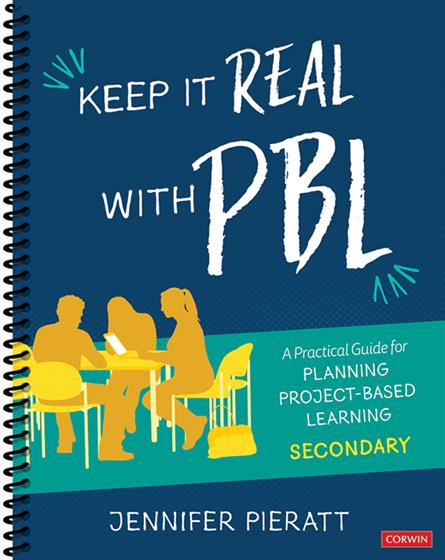List of Resources on the Companion Website
Acknowledgments
About the Author
Introduction
Letter to Secondary Teachers
How to Use This Book
Chapter 1: The Why and What of Project-Based Learning
An Overview of Project-Based Learning (PBL)
Why PBL ?
Intro to HQPBL
Chapter 2: The Role of the Teacher in PBL
The Paradigm Shift
Instructional Best Practices
Adult Agency
PBL Teacher Profile
Chapter 3: Project Brainstorming
Where to Look for Ideas
Collaborative Brainstorming
Chapter 4: Planning PBL for Your Year
Big Picture and Big Ideas
Make Content Connections: Planning Interdisciplinary Projects
Pacing Your Project
Chapter 5: Planning With the End in Mind
Drafting Enduring Understandings
Crafting Driving Questions
Final Products
Culminating Experience
Chapter 6: Benchmarking Your Project
What Is Benchmarking?
Identifying Deliverables
Chapter 7: Assessment in PBL
Best Practices in Assessment Apply to PBL
How to Build Your Project Rubric
Planning for Formative Assessment
Student Engagement in PBL Assessment
Chapter 8: Planning Daily Learning in PBL
Create Your Big-Picture Project Calendar
Daily Learning
Differentiating Project Plans
Chapter 9: Classroom Management in PBL
Establish a Central Location for Project Resources
Make the Project Process Visible
Use Group Contracts, Protocols, and Roles
Consider the Workshop Method
Chapter 10: Launching Your Project
The Hook
Project Guidelines
The Knows/Need to Knows
Project Groups
Home Communication
Chapter 11: Next Steps
Prototype Your Project
Keep Building Those Reflection Skills
Seek Out Collegial Feedback
Plan for Exhibiting Student Work
Collect Community Connections
Scaling and Sustaining HQPBL
Appendix Overview
Appendix A: Complete Project Plans
A1—Sixth-Grade Humanities
A2—Ninth-Grade Humanities
A3—12th-Grade Entrepreneurship
A4—Assessment Tips and Tricks From the Trenches
A5—Sample Detailed Integrated Scope and Sequence
Appendix B: Blank Project Planning Templates
Glossary
References
Index


